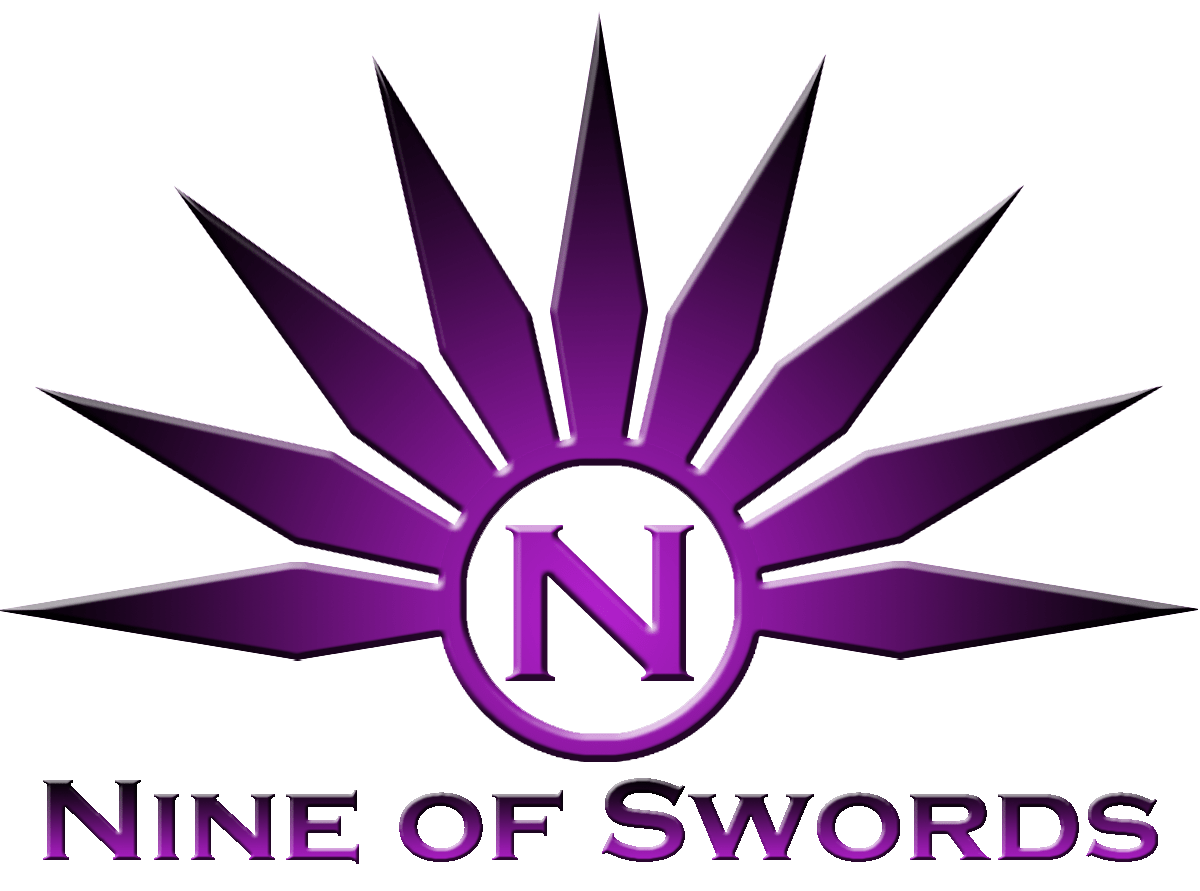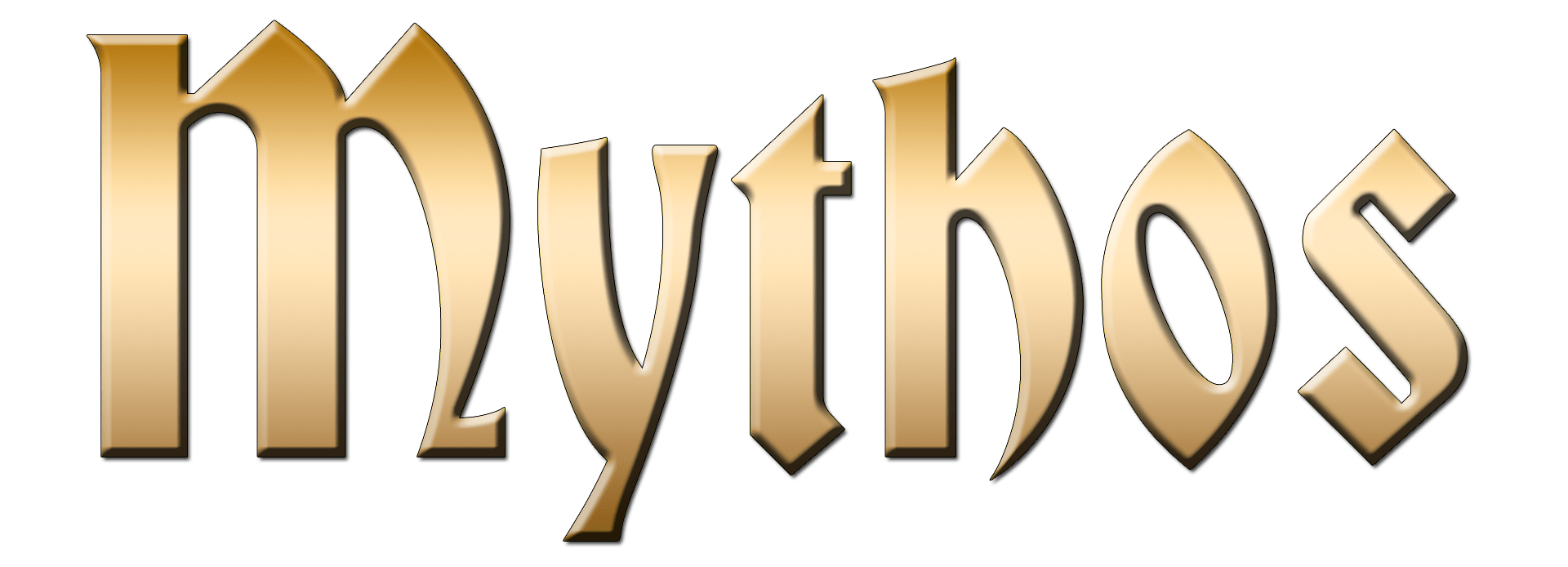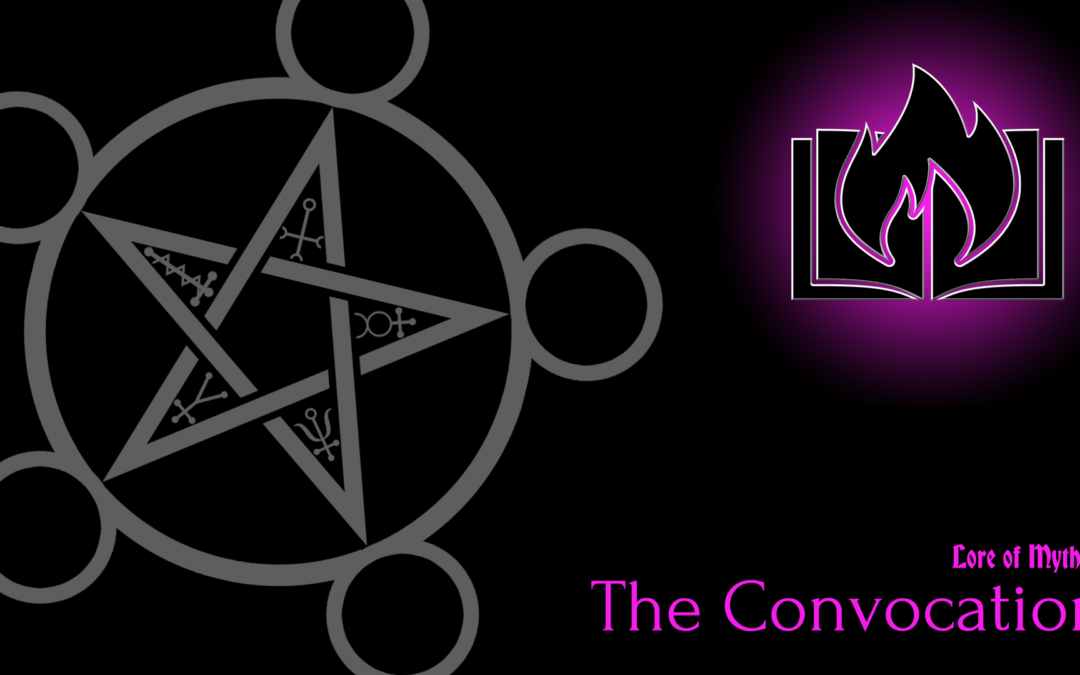Below is an excerpt from “The Convocation: A Primer”, written by Erin Fortunado in 2016.
The Convocation is a collective of Mages that considers themselves the governing body of all magic-users. Legend has it that the group was established in Glastonbury, England by Merlin himself. The organization was moved to Baltimore in 1844, when it was discovered that a Power Nexus had formed there — though it’s possible the Power Nexus had been present long before, and was only discovered at that time.
It should be noted that the Convocation is a governing body, not an instructional one. While the library certainly contains vast resources from which Mages may learn, the task of teaching typically falls into individual mentoring arrangements that the Convocation rarely meddles in.
The Convocation is lead by an Archmage, a title which currently belongs to Cecil Turner (who assumed that mantle since the late 1940s).
Leadership titles within the Convocation, including that of Archmage, are determined by a large stone slab engraved with a pentacle. At each point of the pentacle is a sigil indicating one of the four “Pillars” that the Convocation is divided into. This stone is believed to have been enchanted by Merlin at the Convocation’s founding, and is an enigma whose surface even the the most wizened of Convocation elders have failed to scratch. The leader of each of the Pillars is determined by the mystically-displayed faces upon the surface of this enchanted stone. As fortune has it, the stone has yet to display the face of a Mage unknown to the Convocation, nor has it chosen an individual that would come to refuse their appointed title.
The Pillars of the Convocation are divided by how particular spellcasters prefer to utilize their abilities. It is important to note that a Mage’s aptitude in particular forms of spellcraft does not necessarily denote their choice of Pillar; for example, a sorcerer well-versed in elemental magics would seem most fitting in the Pillar of the Practical, but could (should they choose) join the Pillar of Renewal. This has become an important distinction, as the dissolution of the Pillar of the Primordial leaves Soulsculptors — once exclusively members of that Pillar — with other options within the Convocation, should one ever again appear.
Each Pillar also corresponds to a particular responsibility within the Convocation, thus the Leader of each Pillar has a title that reflects their duties to the group as a whole, alongside their task of managing their specific group of Mages.
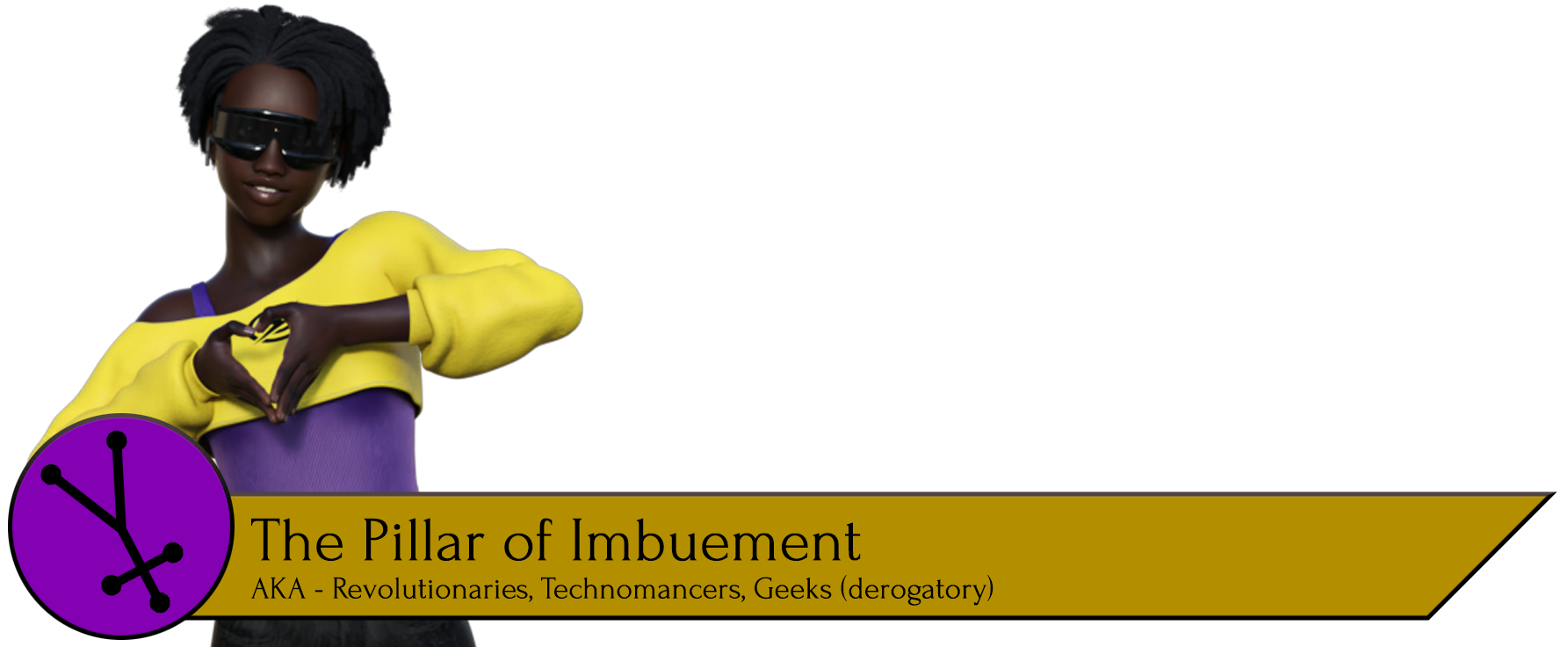
Leader Title: Professor
Current Professor: Patricia “Sparky” Owens
Perhaps the most mercurial of the Convocations Pillars is that which is currently known as the Pillar of Imbuement. Historical records indicate that the original function of this Pillar was to research and explore the fundaments of magic and its functions, but over time that function evolved. Originally known as the Pillar of Mysteries, the name was officially changed in the 1600s as the focus shifted from research to application — enchantment of non-magical items, to be precise. Despite this shift, the leader of the Pillar still bears the title of “Professor,” an inaccuracy born mostly from tradition, but partially because a better title can’t be agreed upon.
Since then, the Pillar of Imbuement has ever sought to instill magical properties into otherwise mundane objects. The practice of alchemy was one such catalyst for the change in the pillar’s direction, as well as the creation of magical staves, wands, and other weapons. In the modern era, mystically-powered computers and mobile devices are the projects of note, though the melding of magic and technology has allowed for the creation of items beyond the dreams of even the most imaginative science fiction author.
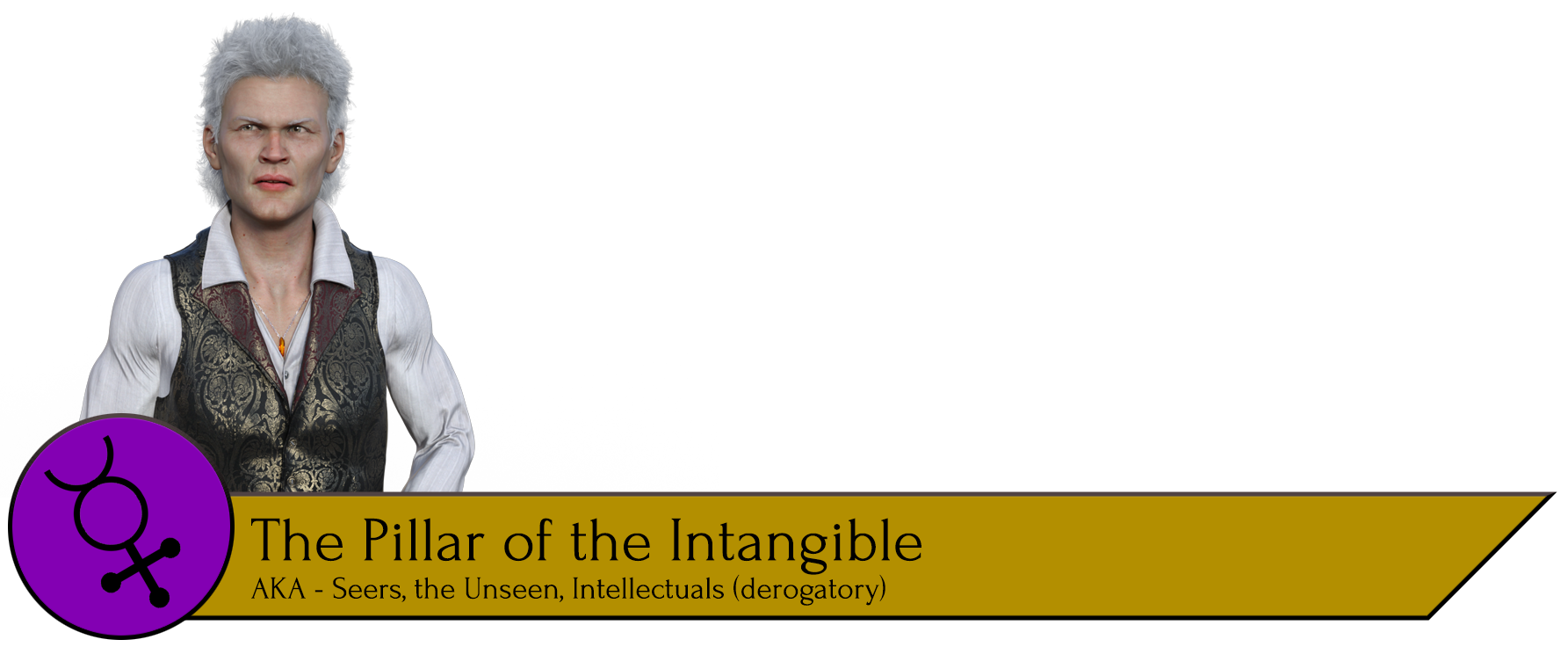
Leader Title: Sentry (formerly Spymaster)
Current Sentry: Desmond Medraut
The Pillar of the Intangible use the mystic arts to pursue the more subtle magical practices: scrying, astral projection, and other “mental magics”. Due to the esoteric nature of the Pillar’s purview, it is the group within the Convocation that has undergone the most shifts in focus. Their practices traditionally put the Intangible Mages in the best position for espionage; indeed some would say that every change to the Pillar (and the Convocation as a whole) has been a result of their own secret agenda.
Since the Pillar of Imbuement’s shift away from researching the inner workings of magic, the Pillar of the Intangible has unofficially taken up that mantle (thus earning them the mocking nickname of “Intellectuals”). Additionally, with the disbanding of the Pillar of the Primordial, the duty of Convocation Sentry has been shifted to the leader of the Intangible as well. Few have spoken out against the consolidation of duties into the Intangible, allowing them to engage in their own pursuits while letting the Seers handle the additional workload.
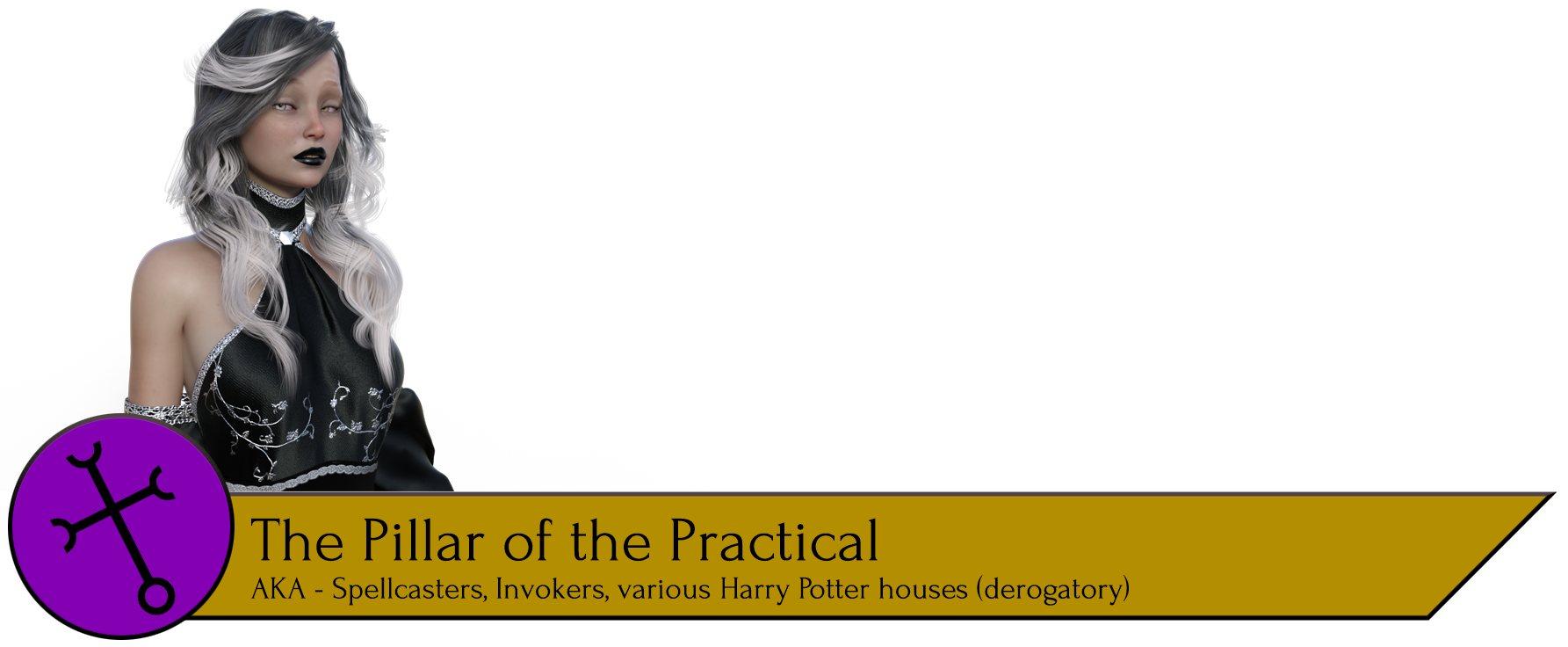
Leader Title: General (somewhat deprecated; the current leader abhors the title)
Current General: Madam Luna
Practicing the more “flashy” magical effects, the Pillar of the Practical is typically anything but practical. The aspects most commonly assumed by laypeople as “what wizards do”, such as elemental manipulation, fall into the practices of this Pillar. Pillar of the Practical Mages aren’t a subtle lot, and most of their abilities cannot be put to use amongst the general public without gathering a great deal of attention, which often draws unfavorable and derisive comparisons to magic used in mortal pop culture fiction.
Due to nearly every offensive form of magic falling within this Pillar’s purview, it has always been the obvious choice for bearing the “military” responsibilities of the Convocation. In the past, when violent conflicts between supernatural sects were more frequent, the Pillar of the Practical would be the sect of Mages tasked with managing the physical combat. As conflicts evolved to become far more subtle to prevent mortal involvement, the militant aspects of the Pillar have been (at least for now) put aside.

Leader Title: Medic
Current Medic: Melanie Rubicante
Like the Pillar of the Practical, the Pillar of Renewal has a rather straightforward approach to magic that has gone largely unchanged throughout history. On the surface, the Pillar of Renewal are the healers – and that’s certainly the bulk of the Pillar’s responsibilities. Even in modern times, where supernatural warfare is more political than physically violent, healers are needed; be it due to mundane mortal injuries, seeking mystical cures for ailments modern medicine has yet to overcome, or simply repairing harm done by careless spellcasters setting things on fire that were not meant to be on fire in the first place.
However, the Pillar of Renewal seeks the preservation of more than just the flesh. Indeed, the maintenance of structures and mending important items are also part of this Pillar’s responsibilities, though they’re rarely talked about. Magical or enchanted items are typically maintained by the Pillar of Imbuement, which makes the upkeep of inorganic material a far less “glamorous” part of the Pillar of Renewal. These tasks are important, but are viewed by the Convocation (and even those within the Pillar of Renewal) as something routine as a mortal loading a dishwasher.
For some reason, the Pillar of Renewal has been rumoured to also be one which hides “assassins”. The source of these rumours is unclear, and there is no evidence to even support such a claim. These conspiracy theories often cite that being the group that most know how to fix things, they’re the most adept at quietly breaking them. It should be noted that if such a secret sect of mystical murderers did exist, it would seem far more likely they’d be part of the Pillars of the Intangible or the Practical.

Leader Title: None (formerly Sentry)
Current Leader: None (formerly Herja)
Until somewhat recently, the Convocation included a fifth Pillar: The Pillar of the Primordial. Unlike the remaining four Pillars, the Pillar of the Primordial’s membership was made up of a practitioners of a particular type, rather than those who used various magics toward a common application. While all Mages must have some sort of inherent gift that allows them to manipulate magical forces, these abilities must be honed and studied over time. Primordial Mages have some sort of innate mystical makeup within them, which changes their understanding of magic on a fundamental level.
Before the disbandment of the Pillar in 1995, all non-human members of the Convocation were part of this Pillar. Additionally, human sorcerers with unique inexplicable “powers” would also be assigned here (such as Wild Talents and Soulsculptors). To quote the studies of Professor Simon Wertz: “The typical Mage can be likened to a man filling a goblet with water from a natural spring, and can learn to put that water to many different uses. A Primordial Mage has this wellspring within themselves, and has to figure out how to deal with all this water flowing out of their body. Perhaps this wasn’t a good allegory.”

Not all Mages join the Convocation, for various reasons. In the case of Wild Talents, they are actively shunned from the Convocation since the loss of the Pillar of the Primordial. Some other Mages never learn of the Convocation’s existence, as their powers are so scant that the Convocation never takes notice of them for recruitment.
There is also a particular subset of mortals who have what appear to be supernatural abilities, but are completely undetectable by magical means. While a mystical study of any typical Mage will reveal they have some power (be it Primordial or a more “standard” type), these “gifted mortals” show absolutely no traces of magical abilities whatsoever, though some do later develop these more “traditional” (and detectable) features. These cases have been documented throughout history, most recently with titles like “psychics” or “beacons”, though the past decade has shown a marked increase in this phenomenon.
